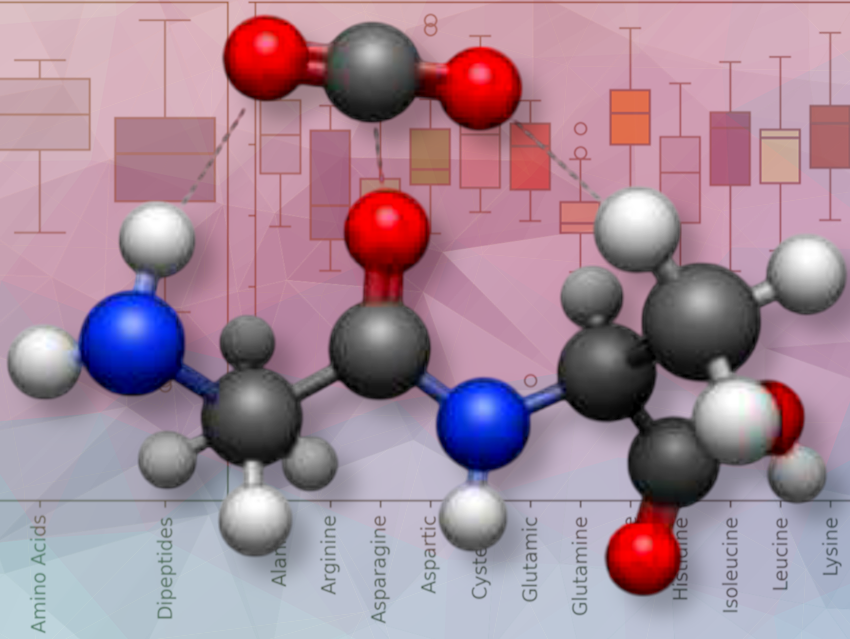Carbon capture, sequestration, and utilization help reduce atmospheric CO2 levels. On an industrial scale, amine-based solvents are commonly used for CO2 capture, but they are expensive, have high vapor pressure, and produce harmful by-products. An alternative approach is to mimic natural materials that efficiently capture CO2.
Amarachi Sylvanus, Grier Jones, and Konstantinos Vogiatzis, University of Tennessee, Knoxville, TN, USA, and Radu Custelcean, Oak Ridge National Laboratory, Oak Ridge, TN, USA, present here a bioinspired method, namely the use of dipetides for CO2 capture, as well as a new computational workflow and statistical analysis of effective binding sites, as described in a recent publication.
What have you done?
In this study, we present a bioinspired alternative approach for CO2 capture using dipeptides, where a database of 960 dipeptide molecules was generated from the 20 natural amino acids. We have developed a new workflow for the automated generation of molecular models and for the automated examination of different interaction sites for CO2 binding.
We performed a series of quantum chemical calculations with density functional theory (DFT) and symmetry-adapted perturbation theory (SAPT). We also provide a statistical analysis on our dataset with suggestions on amino acid subunits in dipeptides that enhance CO2 capture through cooperative binding.
What is your motivation for this research?
The volume of CO2 in the atmosphere has drastically increased over the past few decades, which is related to observed global climate change. Amine based solvents are conventionally used to capture CO2, but are marked by high cost of solvent regeneration, production of toxic intermediates, and high vapor pressure.
We performed in silico generation and screening of dipeptide molecular units formed by the 20 natural amino acids, inspired by the interaction of amino acids and CO2 in bio-organisms.
What is new and exciting about it?
We hypothesized that cooperative interactions between the CO2-philic groups in dipeptides would enhance CO2 capture compared to individual amino acids. Our analysis of the interaction energies in the dataset confirmed this, leading to the development of design principles that could optimize CO2 capture.
What is your key finding?
We developed a computational workflow that leverages cheminformatics tools to systematically analyze all possible amino acid pairs and automate the evaluation of computational chemistry data. The workflow enables the systematic placement of CO2 onto 400 unique dipeptide structures, generating initial geometries for DFT computations. A subsequent algorithm identifies key interaction sites for statistical analysis.
From our analysis, we found that dipeptides generally show more diverse and enhanced interaction energies compared to their individual constituent amino acids, highlighting the role of cooperative effects in enhancing CO2 binding. The choice of dehydrogenated subunits (B subunits) significantly influences the overall interaction energies of dipeptides. Glycine is the most common B subunit associated with weakened interaction energies (45%), while asparagine most frequently strengthens interaction energies (20%).
What is the longer-term vision for your research?
We envisage that the computations and analyses performed here will provide insights into the industrial design of target materials for carbon capture. A possible pathway to incorporate these bioengineered materials is in direct air capture (DAC). DAC is a promising technology that can capture CO2 from ambient air at both, any location–point and distributed sources. By determining the strengths of the interactions between these peptides and CO2, the feasibility of this technology can be better understood.
What part of your work was the most challenging?
The most challenging part of this work was the automated generation of the initial conformations containing dipeptide units, as well as CO2 at different nucleophilic centers of the structures. This was particularly challenging because we first had to generate the isolated dipeptides using L-amino acid subunits. Then, we figured out a way to reasonably distribute CO2 across various nucleophilic regions of the dipeptides, including carboxylic acid groups, carbonyl groups, primary and secondary amine groups, hydrogens connected to linking carbons, and the unique side-chains of the constituent amino acids.
We developed a Python algorithm that updates the z-matrices of the isolated dipeptides with the coordinates of CO2, interacting through the carbonyl groups of the dipeptides. A z-matrix is a mathematical representation of the 3D coordinates of atoms in a molecule, used to describe the structure of the molecule in computational chemistry. The algorithm adds the positions (coordinates) of the CO2 molecules into the z-matrix, specifying where CO2 will interact with the dipeptides.
Is there anything else you would like to add?
Nature offers an abundance of inspiration, particularly in the quest for innovative solutions to combat global warming. The future of science and technology lies not in exploiting nature’s resources for immediate use and depletion but in learning from its intricate processes. By drawing inspiration from nature’s mechanisms, we can develop transformative technologies, such as optimizing carbon capture systems, to address pressing global challenges sustainably.
Thank you very much for sharing these insights.
The paper they talked about:
- In Silico Screening of CO2-Dipeptide Interactions for Bioinspired Carbon Capture,
Amarachi Sylvanus, Grier Jones, Radu Custelcean, Konstantinos Vogiatzis,
ChemPhysChem 2024.
https://doi.org/10.1002/cphc.202400498

Amarachi Sylvanus is a Ph.D. student in the group of Konstantinos D. Vogiatzis at the University of Tennessee, Knoxville, TN, USA.

Grier Jones obtained his Ph.D. from the University of Tennessee under the supervision of Konstantinos D. Vogiatzis, and he is currently a Postdoctoral Researcher at the University of Toronto, Mississauga, ON, Canada.
Konstantinos D. Vogiatzis is an Associate Professor in the Department of Chemistry at the University of Tennessee, Knoxville, TN, USA.





